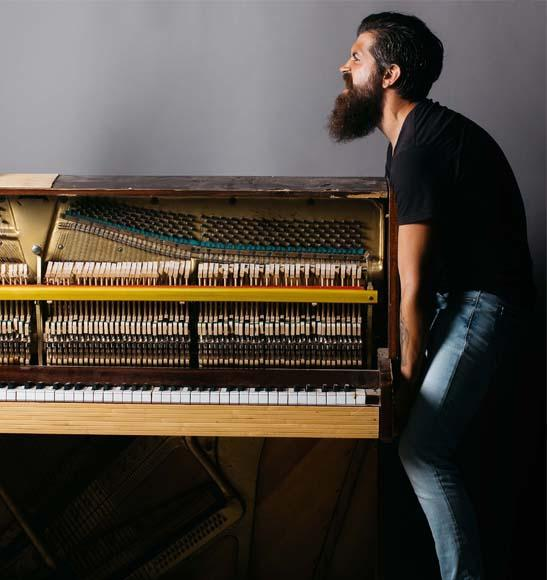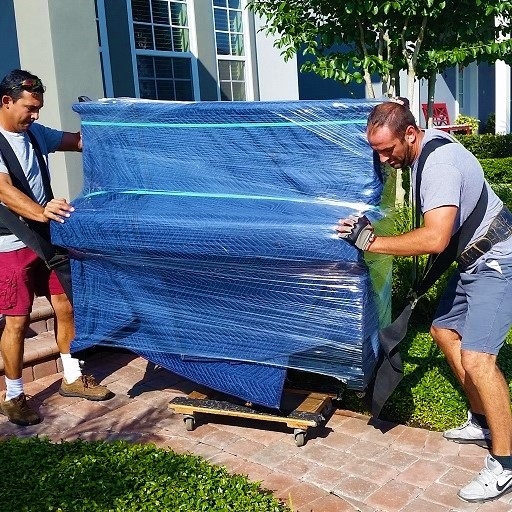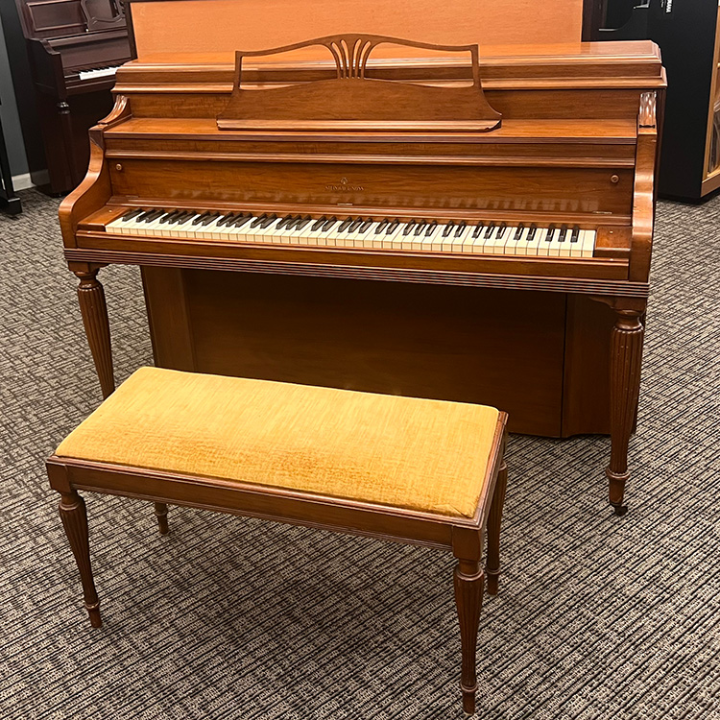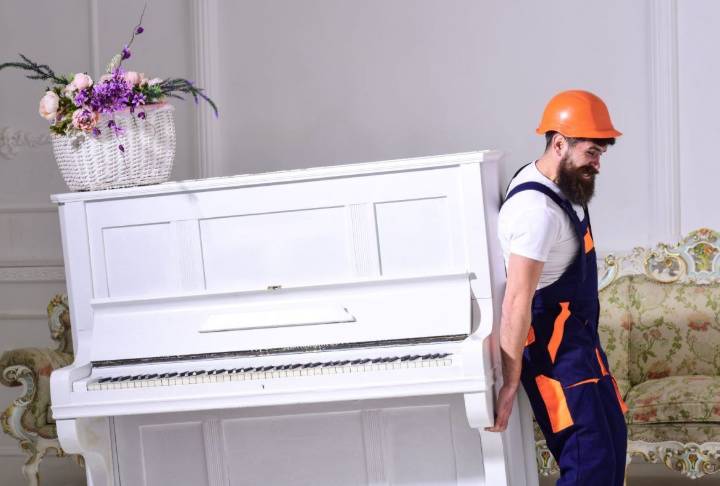The cost to move a piano is highly variable, and it is primarily determined by the piano's type and size. A standard upright piano is the most affordable to relocate, whereas larger baby grand and concert grand pianos command higher prices due to their weight, complexity, and the need for specialized equipment.
Distance is another critical factor that highly influences the cost of moving a piano. Local moves are priced differently than long-distance relocations. Additional costs can include stairs, narrow hallways, or long carries from the truck, which require more labor and time. For any move, hiring certified professionals (like Sydney Piano Removals) is non-negotiable. They know how to safely take apart, pack, and move your fragile and heavy instrument, avoiding damage that would cost a lot more than the moving cost.
But before you book an appointment, always get a detailed and in-person quote for an accurate price. Whether you want to move an upright piano, a player piano, or an organ, let's get a breakdown of how much it may cost you.
When you know the variables that shape the final price of moving a piano, it empowers you to make an informed decision. However, the primary factor is the piano type: an upright piano is generally less expensive to move compared to a grand or baby grand. This is because larger and heavier instruments need partial disassembly, specialized crating, as well as more people.
The logistics of both locations (from & to) is another significant factor that impacts the cost of moving a piano. The process includes a professional assessing the complexity of moving. For example, stairs, long walkways, tight corners, as well as the elevator availability. It probably requires more time, specialized equipment (such as piano skids and heavy-duty straps), and potentially extra crew members if moving the instruments seems more challenging.
Let's see what factors actually affect the overall cost of moving a piano.


The final quote for moving a piano is definitely not a specific figure that applies to all situations. It is measured based on several critical variables that determine the time, labor, as well as the equipment required for a safe move.
Piano Type & Size:A large and complex shape often requires partial disassembly, custom crating, and more movers, which may increase the cost of moving.
Move Distance & Logistics:The cost of a local move usually depends on time and complexity. Long-distance moves factor in fuel, tolls, and the number of days required for transport. Surprisingly, any distance between the truck and your door also influences the price.
Property Accessibility:Challenges at either location may significantly impact the quote. For instance, navigating stairs, tight corners, narrow hallways, or even the need for a crane. For each hurdle, you need special tools, more people, and more time, all of which add to the total cost.
Insurance & Valuation Coverage:Basic coverage is often included, but you may opt for additional Full Value Protection for high-value or antique instruments. This high-quality insurance covers the cost of repairs or replacement and will be included in your total estimate.
Ultimately, when you understand these little elements that contribute to your final expense, it can help you make an informed decision as well as ensure your prized instrument receives the best care possible.
If you're moving a standard upright piano between two homes in Auburn, and there aren't any major access issues (like stairs or long distances from the truck), the cost is usually around $250 to $400. This typically includes a two-person crew, basic padding, and a piano trolley.
However, moving a grand piano is more difficult and needs at least three movers, special tools (like a piano skid board), and the legs and lyre are often taken apart. This means that a more accurate quote would be between $450 and $700 or more.
But these base prices can go up if there are steps, a long carry, limited access, or any other services that are added.


At first, moving a piano all by yourself may seem like the most logical and cost-effective way to save money. In fact, the plan may seem as simple as renting a truck, recruiting some friends, and buying some moving blankets. However, this method doesn't take into account how heavy and fragile a piano really is, turning a possible savings into a big financial and physical risk.
What DIY Moving InvolvesA piano can weigh anywhere from 300 pounds (upright) to over 1,200 pounds (concert grand). If you truly want to move it all by yourself, you'd need to rent equipment (such as dollies, skid boards, lifting straps, and protective padding). Moreover, you might need a vehicle with proper suspension to handle the piano's weight and ensure stability while moving the piano organs.
Risk of DIY Moving:DIY moves often run between $150 and $400 for truck rental, equipment, and supplies. But the costs can quickly outweigh professional moving fees, which typically start around the same price for local moves but include insurance and expertise if something gets damaged or someone gets injured.
Selecting the right mover is the most critical step when you want to ensure your piano's safety. Residents of Sydney know that Sydney Piano Removalists has the skills needed to handle such a delicate job. As our website demonstrates, our service offers more than just transport; we provide a comprehensive and piano-specific solution, whether it's about moving an upright piano or a concert grand piano.
Why homeowners trust us with their pianos: Piano-Specific Expertise:Our crews are trained in the exact techniques needed to protect your instrument's delicate internal mechanics and flawless finish.
Specialist Equipment:We use professional-grade tools (including custom skid boards, weight-rated straps, and padded blankets) that are designed exclusively for securing pianos.
Transparent Quotes:We provide (detailed) upfront pricing after a thorough assessment. You will know the cost before we begin, with no hidden fees.
Insurance Protection:Our comprehensive coverage protects your piano against any unforeseen events while moving the piano.
Choose the experts who treat your piano with the same care you do. Choose Sydney Piano Removals for a seamless, secure, and stress-free moving experience.
A: The cost to move a piano locally typically ranges from $150 to $600, depending on the type of piano, distance, and whether stairs or tight spaces are involved. Grand pianos or moves requiring special equipment may cost more.
A: Yes, absolutely. Upright pianos are usually cheaper to move than grand or baby grand pianos. The size, weight, and disassembly needs of the piano directly impact the overall moving cost.
A: Yes, movers often charge additional fees for stairs, narrow hallways, elevators, or tight turns. These obstacles require more labor and specialized techniques, increasing the total cost by $50 to $200 or more.
A: Definitely. Pianos are heavy, delicate instruments. Professional movers have the right tools and experience to ensure safe transport without damage, which can save you costly repairs in the long run.
So, exactly how much does it cost to move a piano? There isn't a single flat fee, as we explored above. The final price is a reflection of your piano's unique characteristics (such as its size, the distance, and the specific challenges of your home's accessibility). In some cases, it might be tempting to move the piano all by yourself, but the huge risks to your safety, your property, and the piano itself far outweigh any savings you might think you'd get.
Ultimately, investing in a professional service can help you protect your valuable instrument, home, as well as prevent injury. When you select professionals (like Sydney Piano Removalists) who provide clear quotes, the right tools, and full insurance coverage, it guarantees that your piano will arrive in perfect condition, giving you total peace of mind.
For a precise and obligation-free quote tailored to your specific move, contact the specialists at Sydney Piano Removals today. Let us provide the care your piano deserves.
Contact us today